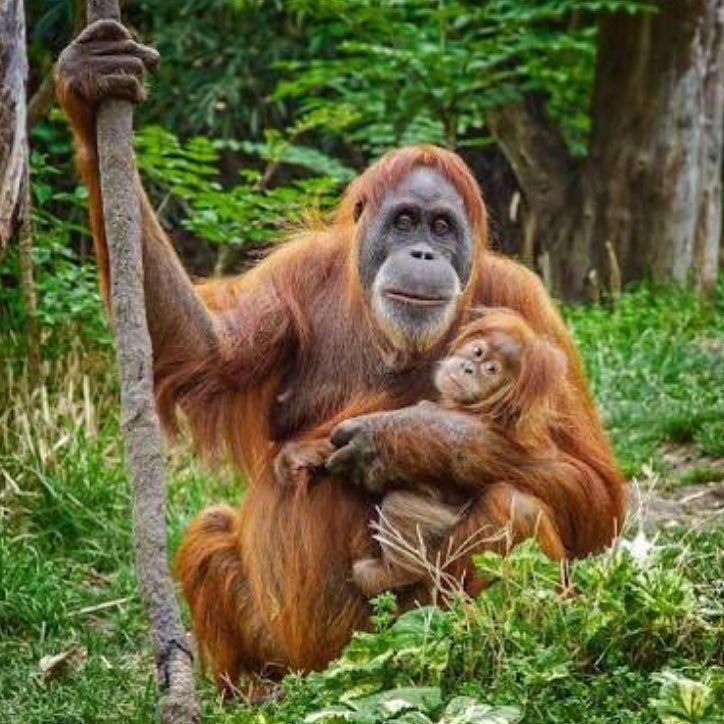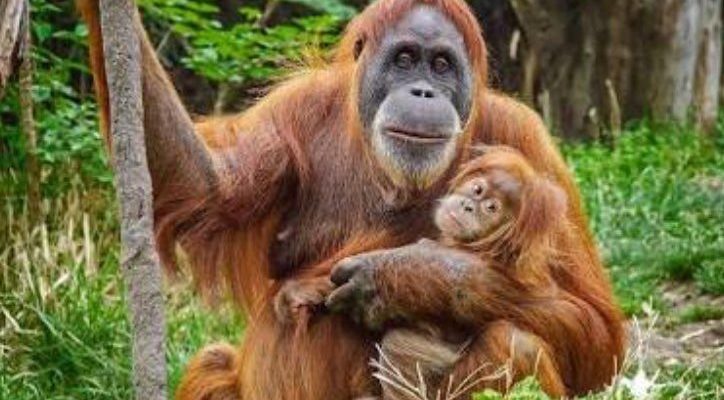
To start, it’s crucial to recognize that orangutans are more than just cute and cuddly creatures. They’re intelligent beings with complex social structures, and they face severe threats due to habitat loss and poaching. Clearing up these myths is essential for their protection and for promoting awareness about their plight in the wild.
Myth 1: All Orangutans Are the Same
You might be surprised to learn that not all orangutans are created equal. There are actually three distinct species: the Sumatran orangutan, the Bornean orangutan, and the recently identified Tapanuli orangutan. These species have different genetic makeups and behaviors due to their separate habitats. The Sumatran orangutan is often smaller and has a different type of fur compared to its Bornean counterpart.
Each species has adapted to its environment in unique ways. For example, the Sumatran orangutan is typically found in tropical rainforests and has developed a more social lifestyle compared to the Bornean orangutan, which often leads a more solitary life. Understanding these differences gives us a better appreciation of their survival strategies and social interactions.
Differentiating Characteristics
Not only do Sumatran and Bornean orangutans differ in size, but they also display variations in their diets and social structures. The Sumatran orangutan tends to eat more fruit, especially durian—a favorite treat! In contrast, the Bornean orangutan has a broader diet that includes leaves and bark. These feeding habits highlight how each species utilizes its specific environment for survival.
When it comes to behavior, Sumatran orangutans are often observed sharing their surroundings with others, including mothers and their offspring. This sociable nature is a testament to their adaptability and intelligence. Next time you see an orangutan, remember—their differences make them even more special!
Myth 2: Orangutans Are Lazy
Another common myth is that orangutans are slow and lazy creatures. Sure, they might look like they’re lounging around, but in reality, they are anything but lazy. These intelligent apes are constantly engaging with their environment. From crafting tools to solve problems to building nests high in the treetops every night, their lives are filled with activity and learning.
Let’s consider their daily routine. Sumatran orangutans spend a significant portion of their day foraging for food, swinging through the trees, and interacting with others. When they build their nests, they choose specific branches and leaves to ensure safety and comfort, showing their problem-solving skills.
Tool Use and Problem Solving
Did you know that orangutans are among the few animals that use tools? They might use sticks to extract termites from tree holes or leaves to soak up water. This ability to manipulate objects demonstrates their intelligence and adaptability. When we think of “laziness,” we’re often overlooking the complex behaviors that indicate a rich, active life. They might move slowly, but that’s just their way of conserving energy in their lush, climbing world.
Myth 3: Sumatran Orangutans Are Not Endangered
You might think that since orangutans are often depicted in zoos and sanctuaries, their populations are stable. Unfortunately, that’s far from the truth. Sumatran orangutans are critically endangered, mainly due to deforestation and habitat destruction. Their rainforest homes are disappearing at an alarming rate for palm oil plantations and logging.
This stark reality means that populations are declining rapidly, with estimates suggesting that fewer than 14,000 Sumatran orangutans remain in the wild. The ongoing destruction of their habitat is a pressing issue, and it’s something we must address collectively.
Conservation Efforts
Fortunately, many organizations are dedicated to protecting these majestic creatures. Efforts include habitat restoration, anti-poaching initiatives, and raising awareness in local communities. By supporting conservation projects and choosing sustainable products, we can contribute to the survival of the Sumatran orangutan.
It’s not just about saving a species; it’s about preserving biodiversity and maintaining the health of our planet. It’s a shared responsibility, and every little bit helps.
Myth 4: Orangutans Are Just Big Monkeys
Many people mistakenly categorize orangutans as just “big monkeys,” but that’s a gross oversimplification. Orangutans are actually great apes, a separate group distinct from monkeys. Great apes, which include gorillas, chimpanzees, and bonobos, share a closer evolutionary lineage with humans than with monkeys.
Understanding this difference is key to appreciating their intelligence and social structures. Great apes, including Sumatran orangutans, exhibit complex emotions, social bonds, and even cultural behaviors. They can show empathy and compassion—qualities we often attribute only to humans.
Social Structures
In their natural habitat, orangutans form relationships that can be quite intricate. Mothers are highly nurturing, often staying with their young for up to eight years, teaching them vital survival skills. This time spent together promotes strong bonds and ensures that the next generation is equipped to thrive. Recognizing orangutans as intelligent beings deeply connected to their young helps us see them as more than just oversized primates; they are unique individuals in their own right.
Myth 5: Sumatran Orangutans Are Always Found in Trees
While it’s true that Sumatran orangutans are excellent climbers, they aren’t always found high in the treetops. These remarkable animals spend time both in trees and on the ground. They may climb to find food or build nests, but they also venture down to explore their surroundings.
Ground movement is more common among young males, who often trek on the forest floor to look for fruits and mates. This behavior is crucial for social interaction and establishing territories. Seeing them on the ground helps us realize that their lives are rich with exploration and a sense of adventure.
Adapting to Their Environment
The ability to navigate both tree and land showcases the adaptability of Sumatran orangutans. They use the forest’s resources efficiently and adjust their behavior based on available food sources. This highlights their intelligence and emphasizes the importance of habitat preservation, as losing trees means losing their climbing spaces, food sources, and safe areas for raising young.
Myth 6: You Can Domesticate an Orangutan
Some folks might think that orangutans can be trained or domesticated like dogs or cats, but that’s a misconception that comes with serious consequences. Orangutans are wild animals, and attempting to keep them as pets is not only unethical but also illegal in many places.
In captivity, orangutans can experience significant stress due to confinement and lack of natural stimuli. They thrive in their natural habitat, and any efforts to train or domesticate them often lead to harmful behaviors or health issues.
The Importance of Wild Habitats
In their natural environment, Sumatran orangutans have the freedom to live as nature intended. They exhibit natural behaviors such as foraging, socializing, and raising their young. Conservationists emphasize the need to preserve their habitats, ensuring these incredible creatures can thrive without human interference.
By understanding their wild nature, we can better appreciate the importance of protecting them and their homes. Conservation efforts focus on preserving their natural habitats and encouraging local communities to engage with wildlife responsibly.
Clearing up these common myths and misconceptions is vital to understanding the Sumatran orangutan and the challenges they face. They are extraordinary creatures full of intelligence, emotion, and social complexity. Recognizing the truth about these amazing apes is an essential step in their conservation and protection.
As we sip our coffee and contemplate our role in safeguarding their future, let’s take action. Whether it’s supporting sustainable practices, educating others, or simply cherishing nature, every effort counts. The next time you think of orangutans, remember their richness beyond the cute factor; these magnificent beings deserve our respect and protection.

